Hi folks! Please click on ‘Watch on You Tube’. Please LIKE and SUBSCRIBE when you get there!
BOB AND SARA
EXTRACTS
Sara is clearly an autobiographical song. It is a highly moving and desperate plea, which focuses on the happy earlier days of their relationship when their children were very small. There is no mention of marital strife. But the song is so obviously about Dylan’s own life that the lack of subterfuge or ambiguity is striking in itself. Desire is an album of songs that are conceived of as short ‘movies’ in various genres. Romance in Durango, One More Cup of Coffee and Isis are all Mexican-themed ‘Westerns’. Joey is a rather mawkish ‘Mafia flick’.
Hurricane is a gritty, anti-racist ‘social conscience’ story, whereas Mozambique and Black Diamond Bay are comic tales set in ‘exotic’ locations.In this context Sara can be seen as a highly romanticised ‘biopic’ consisting of several stylised blissfully happy scenes from an imagined past. It is unashamedly nostalgic and sentimental and isquite clearly designed to ‘pull on the heart strings’ of Dylan’s estranged wife, so that she will forgive him and come back to him.
SARA AND BOB
The song also differs from most of Dylan’s work in that it is not difficult to interpret. The six verses consist of sepia-tinted scenes of happy occasions from the past, presented to us in the form of clear and evocative images. Each verse is followed by a variable plaintive chorus, in which Bob idealises Saraand pleads for her to return to him. Dylan enunciates with great clarity, delivering a truly passionate performance. His use of the harmonica is especially effective. The overall tone of the song, however, is one of deep and profound sadness. According to Dylan’s biographer Howard Sounes, Dylan actually asked Sara to be present at the recording sessionwhen he unleashed the song for the first time. The couple did reunite and Sara became part of the upcoming Rolling Thunder revue, playing the leading role of Clara in Renaldo and Clara, Dylan’s experimental ‘arthouse’ film of the tour. But their reconciliation did not last and a very messy divorce followed.
Despite Dylan’s heartfelt appeals, the prevailing mood of the song suggests that, deep down; he already knew that their marriage was doomed. Whatever transgressions he committed (which certainly, in real life, included him having affairs with other women) are never outlined in any detail. The song has the air of a tragedy. The fact that Dylan, always good at ‘keeping things vague’ (as Joan Baez put it in Diamonds and Rust), has actually exposed elements of his real life adds to the poignancy of the song. His tone of mournful regret makes it a genuine tearjerker. But it is not always clear that he considers himself to be responsible for the problems in the marriage.
SARA, BOB AND SAD EYED LADY
The fourth verse provides the biggest shock for Dylan fans. The first line: …I can still hear the sound of those Methodist bells… is highly evocative, if somewhat portentous. Then we hear that: …I’d taken the cure, and I’d just gotten through…Here Dylan appears (at least on the surface) to be being disarmingly honest about his personal life. The line suggests that he had been a drug addict, unless he is referring to some unknown illness (possibly a sexually transmitted disease). But the impact of this is somewhat buried by the next revelation: …Stayin’ up for days in the Chelsea Hotel/ Writing ‘Sad Eyed Lady of the Lowlands’ for you…
Here, for the first and only time, Dylan refers within a song to the composition of one of his songs – and a major song at that. All this, however, may be mere subterfuge, as according to the musicians that played on Blonde on Blonde, Sad Eyed Lady was composed in the studio while he was working on the album. And although that famous epic ballad contains several knowing references to Sara (‘Lowlands’ is often thought to be a play on ‘Lownds’and the reference to the ‘magazine husband’seems to refer Hans Lownds, her first husband who was a journalist) it is debatable whether the song is entirely ‘about’ her or whether the ‘Sad Eyed Lady’ is a composite of all Dylan’s lovers(or may even refer to Dylan himself).
None of this may be terribly surprising for ‘Dylan watchers’. We expect him to present a colourful and highly imagined version of his past history, as he did when he first emerged as a folk singer, claiming to have left home as a young teenager and spending several years working in traveling carnivals. In Chronicles many of his recalled memories appear to be, to say the least, exaggerated. But in making such a statement about the composition of one of his most ‘legendary’ songs, Dylan appears to be truly ‘laying himself on the line’ by publically revealing the sort of detail that normally he keeps very close to his chest. This certainly impressed Dylan’s fans, although whether his wife herself truly believed it is perhaps another matter. In the chorus that follows Dylan reassures her that …Wherever we travel we’re never apart… suggesting that he is preparing for a future in which they will really be separated.
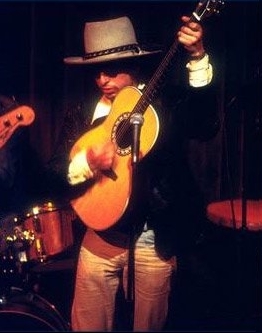



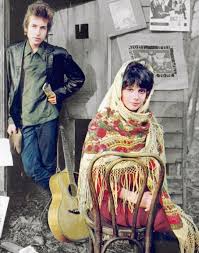
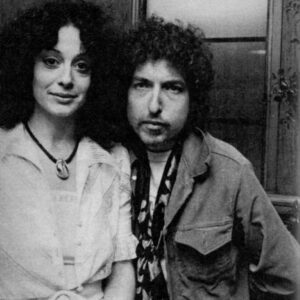
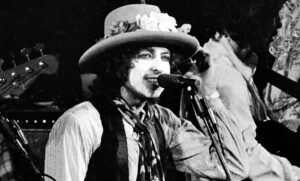
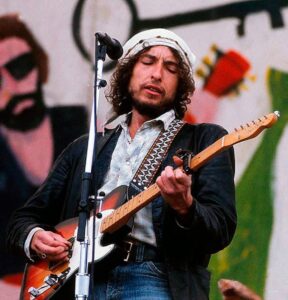
Leave a Reply